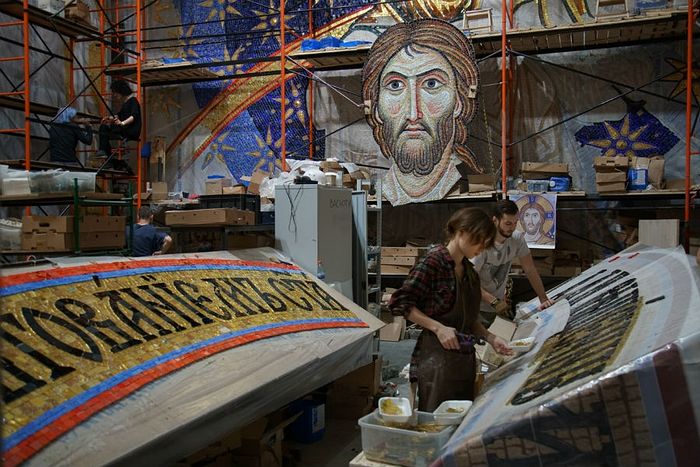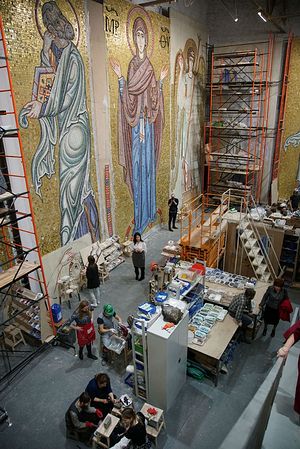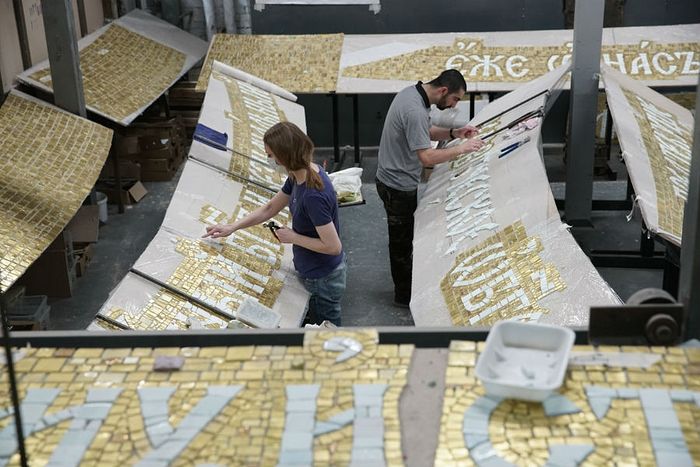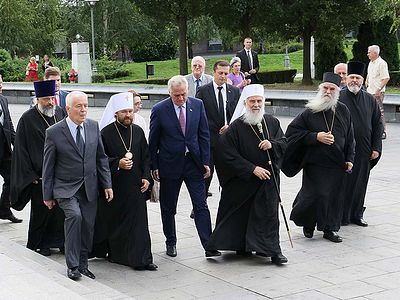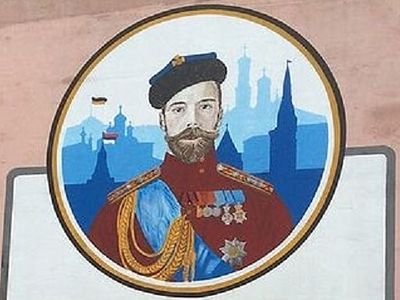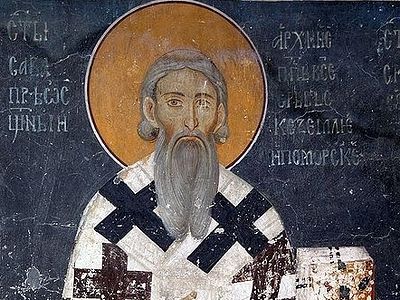Moscow, March 24, 2017
Russian specialists have created unique and unprecedented large-scale icons for the looming Cathedral of St. Sava on Belgrade’s Vračar plateau. The mosaic design for the Belgrade church was decided upon at a recent Moscow session of the special commission for adorning the church, reports the site of the Russian Ministry of Culture.
Participants in the meeting, chaired by the head of the Moscow Patriarchate’s Department for External Church Relations Metropolitan Hilarion of Volokolamsk, noted the high artistic and professional level of the mosaics, created on an unprecedented scale, for which there are nor analogous works in modern monumental art. The members of the commission also stressed the special importance of this project as evidence of the centuries-old friendship between the Russian and Serbian peoples, and the brotherhood between the Russian and Serbian Orthodox Churches.
The project for adorning the St. Sava Cathedral in Belgrade was implemented with the participation of the Russian Ministry of Culture, the Russian Academy of Arts, the Rossotrudnichestvo federal agency for humanitarian cooperation, the Gazprom Neft oil company, and the Society for the Erection of the Church of St. Sava on Vračar.
The Russian Ministry of Culture announced a competition to design the mosaic decoration of St. Sava’s Cathedral in 2014. The Moscow International Fund for Assistance of UNESCO under the leadership of the Russian Academy of Art’s Nikolai Mukhin won the contest.
A solemn presentation of the mosaic decorations for the dome in St. Sava’s took place on December 3, 2016, with the participation of Serbian president Tomislav Nikolic.
St. Sava’s Cathedral was conceived of as the patriarchal church for the Serbian Orthodox Church, and is the largest Orthodox Church in Europe. Its construction began in the 1930s on the place where the relics of St. Sava (1175-1236), the founder and first primate of the autocephalous Serbian Orthodox Church, were burned by Turkish order.
After the 1941 bombing of Belgrade construction on the temple ceased altogether, resuming only in 1985. The inside surface area for mosaics is 183,000 square feet.
